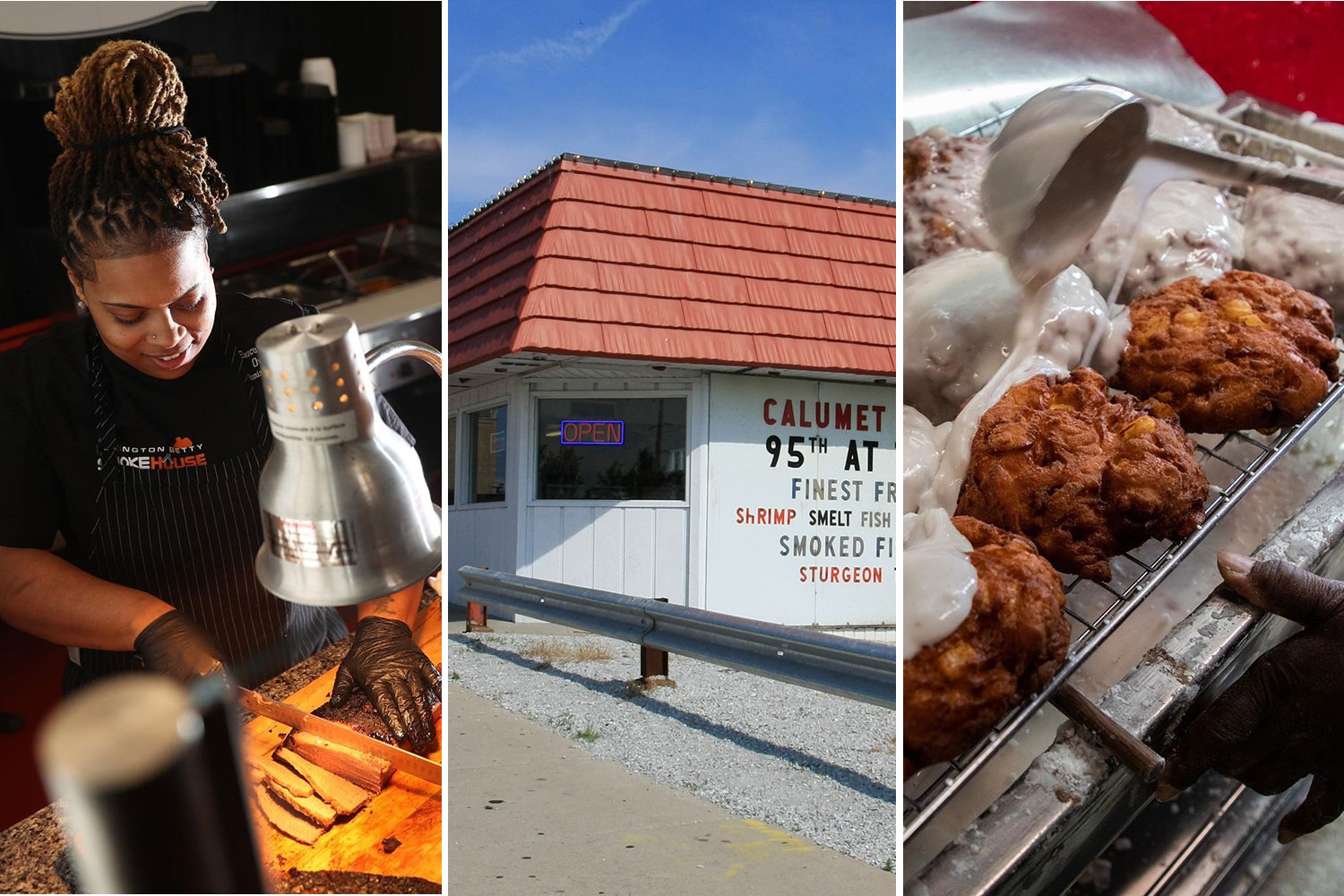In the third installment of the four-part series (you can read the first here and the second here), we’re back out into our favorite parts of the city’s neighborhoods.
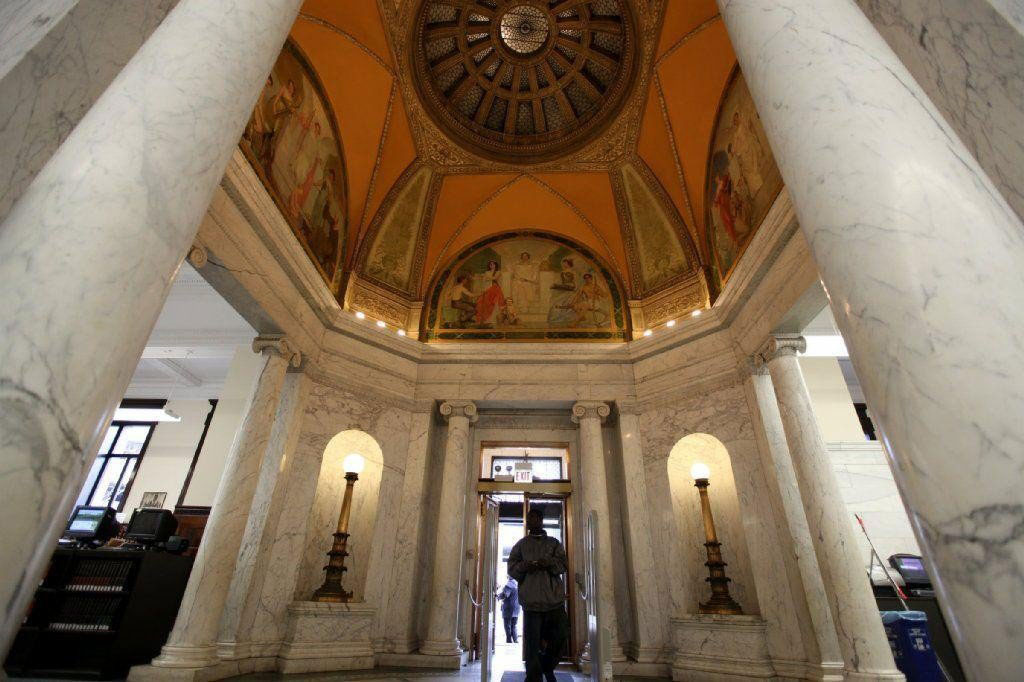
39. Kenwood: Blackstone Branch, Chicago Public Library, 4904 S. Lake Park Ave.
Every neighborhood wants a new library, right? Not Kenwood. Blackstone is the oldest branch of the Chicago Public Library, dating back to 1904, and is classic in every way, from the granite columns fronting the entrance to the Grecian murals in the marble rotunda. The library’s namesake and benefactor, Timothy Beach Blackstone, president of the Chicago and Alton Railroad, may have been competing with Andrew Carnegie when he left $250,000 in his will for a library. As a work of art and architecture, Blackstone exceeds any Carnegie Library.
40. Washington Park: Retreat at Currency Exchange, 305 E. Garfield Blvd.
How can you not feel hip sitting in a coffee shop operated by artist Theaster Gates? His imprint is everywhere, from the cafe’s name painted on the weathered wall behind the counter, to the shelves full of books, to the Thursday evening DJ sessions. The cafe serves cocktails as well as coffee and breakfast sandwiches; the menu depends on which local chef is sitting in for a residency.
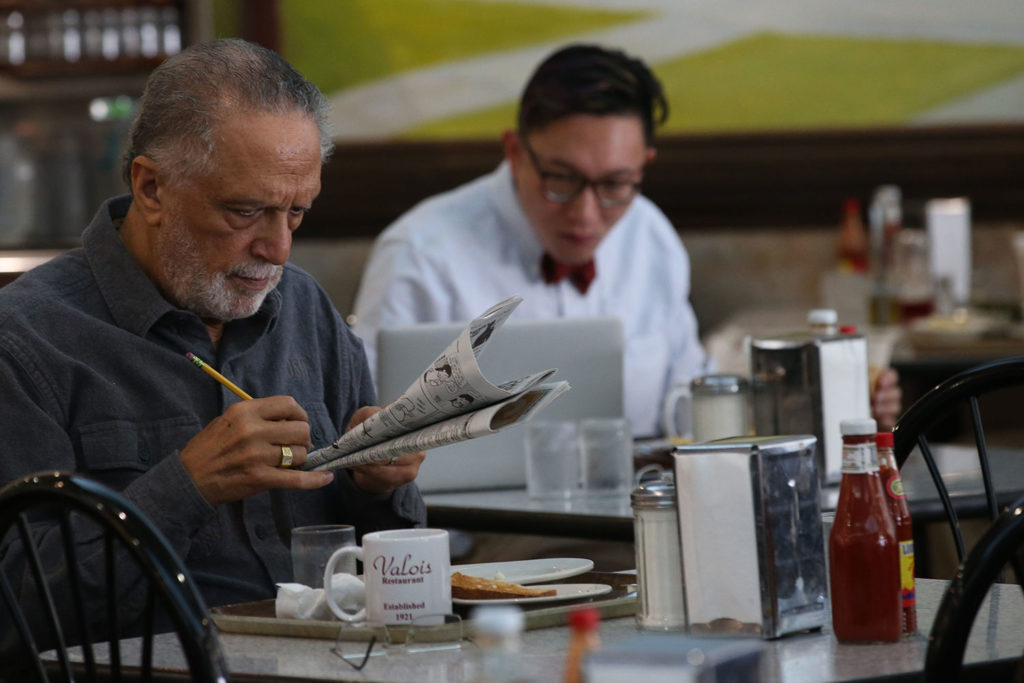
41. Hyde Park: Valois Restaurant, 1518 E. 53rd St.
My idea of a great restaurant: one that serves the most food for the least amount of money. No place fits that description better than Valois, where Greeks in paper hats dollop heaping plates of comfort meals at the cafeteria counter — roast beef, ribs, macaroni and cheese, baked chicken — usually for less than $10. Last time I went there, I ordered fried eggs, grits, and two biscuits I saved for lunch. Barack Obama ate here often, in his Hyde Park days. A board lists his favorite breakfasts. Valois is such a Hyde Park institution it was the subject of sociological study, Slim’s Table, about the old-man regulars.
42. Woodlawn: East Lagoon Bridge, Jackson Park, 6401 S. Stony Island Ave.
This is that bridge from the Blues Brothers. Jake and Elwood pull up in the Bluesmobile and are told by the police they can’t cross because the Nazis are holding a rally there. “Illinois Nazis,” Elwood scoffs. “I hate Illinois Nazis,” Jake agrees. Elwood hits the gas. The Bluesmobile barrels through the protesting crowd, forcing the Nazis to leap into the lagoon. This is not a motor vehicle bridge, but the Bluesmobile doesn’t need roads.
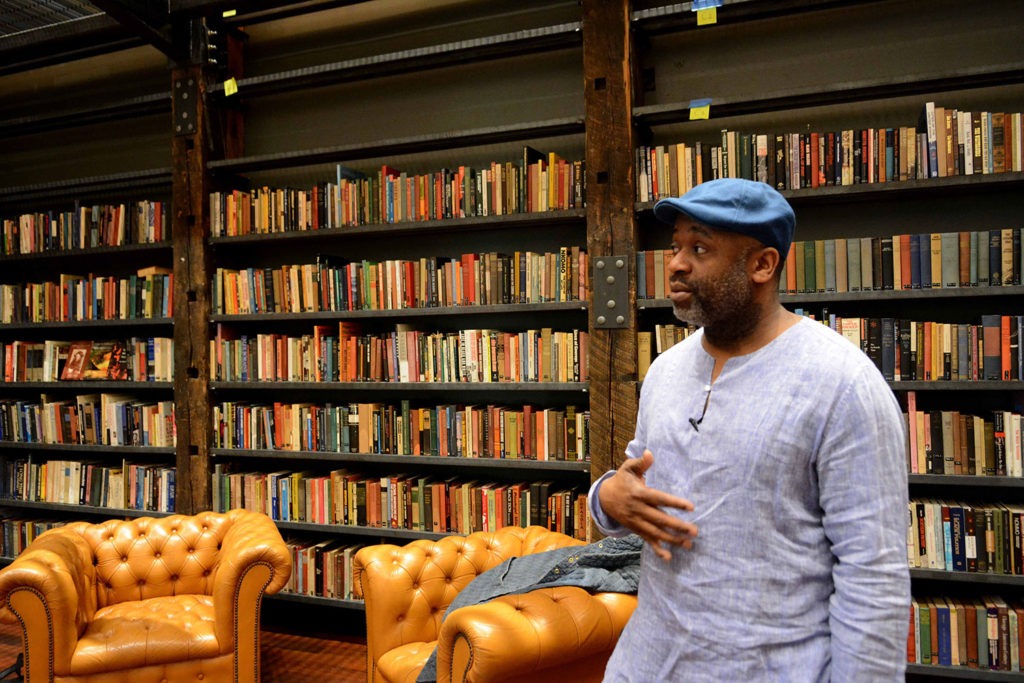
43. South Shore: Stony Island Arts Bank, 6760 S. Stony Island Ave.
A Grecian-style savings bank converted to an art gallery and archives, this is the headquarters of Theaster Gates’s Rebuild Foundation. The Arts Bank holds a collection of 60,000 glass slides; the Johnson Publications library, used by the editors of Jet and Ebony; and House music DJ Frankie Knuckles’s vinyl collection. It’s also a space for concerts, plays, lectures, film screenings, and art exhibits.
44. Chatham: 50 Yard Line, 69 E. 75th St.
Uncle Derrick is here on Friday night in a six-button purple suit with a matching bowler hat, stepping to the dusties.
45. Avalon Park: Chicago Vocational Career Academy, 2100 E. 87th St.
From the expressway, which is how most people see it, CVS looks as utilitarian as its name. From the front, on 87th Street, it’s Chicago’s finest and most imposing example of Art Deco-Moderne architecture. Designed in 1938, its most striking feature is a curved entrance with a limestone facade, fluted limestone pillars, and art deco grilling. The school’s name is carved above the main entrance in stylish Broadway typeface. Alma mater of Dick Butkus, who began his all-Illinois football career with the Cavaliers.
46. South Chicago: Steelworkers Park, East 87th St. at Lake Michigan
When U.S. Steel South Works closed in 1992, the mill left behind a 415-acre piece of lakefront property, most of it built on slag, a byproduct of steelmaking. Plans to build housing fell through, because the land is too polluted for habitation. So the city built a park on Illinois River bottomland barged up from Peoria. There’s a statue of a steelworker sheltering his family, which some people may find patriarchal, and a 30-foot-tall climbing wall, built into the ore wall, the mill’s last remaining structure.
47. Burnside: St. Mark’s Church of God in Christ, 9201 S. Avalon Ave.
Churches are always a clue to which ethnic group originally occupied a neighborhood. St. Mark’s copper dome is topped with a Ukrainian cross. The church was built in 1913, as Sts. Peter and Paul Ukrainian Church, to minister to immigrants from Dobra, Ukraine, who arrived in Chicago to labor on the Illinois Central Railroad. “The Illinois Central RR had built a roundhouse and repair shops south of 95th St.,” according to a website devoted to the Dobra diaspora. “I am convinced that someone from Dobra was working in the I C employment office or was able to influence the hiring of his fellow immigrants from Dobra.” Sts. Peter and Paul moved to Palos Park in 1976, following the white flight of its parishioners.
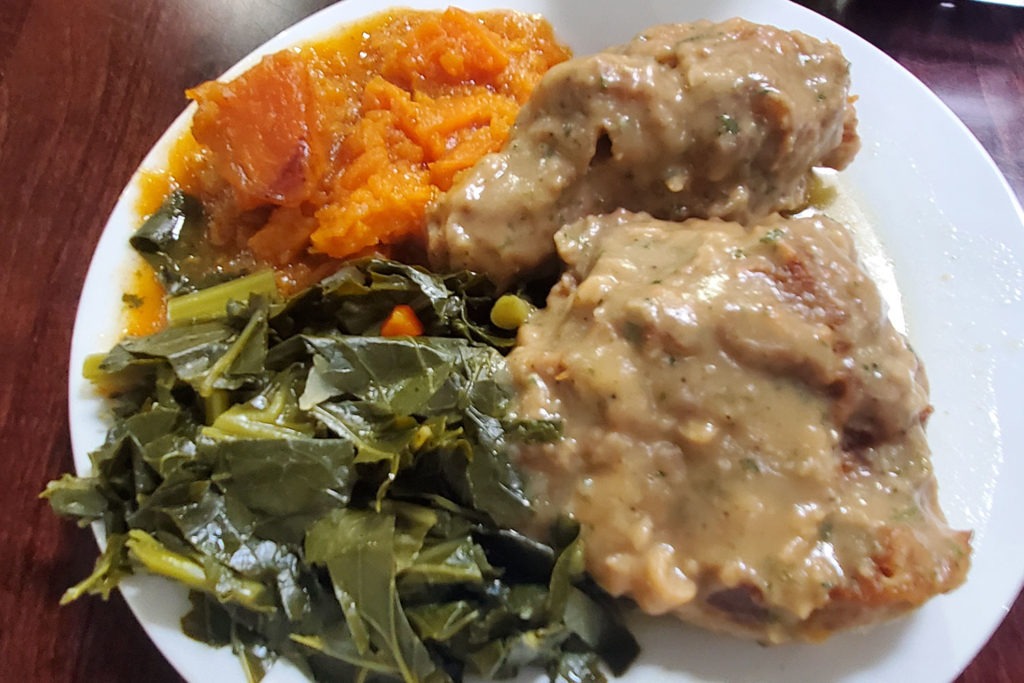
48. Calumet Heights: Gladys’s, 1225 E. 87th St.
This restaurant’s name is a tribute to Gladys’s Luncheonette, the Bronzeville soul food restaurant that closed in 1996. They do soul food here, on a street that’s a desert for anything but fast food. I had the smothered chicken, collard greens, and candied yams. The meal was so delicious I would have eaten it again, if it hadn’t also been so filling.
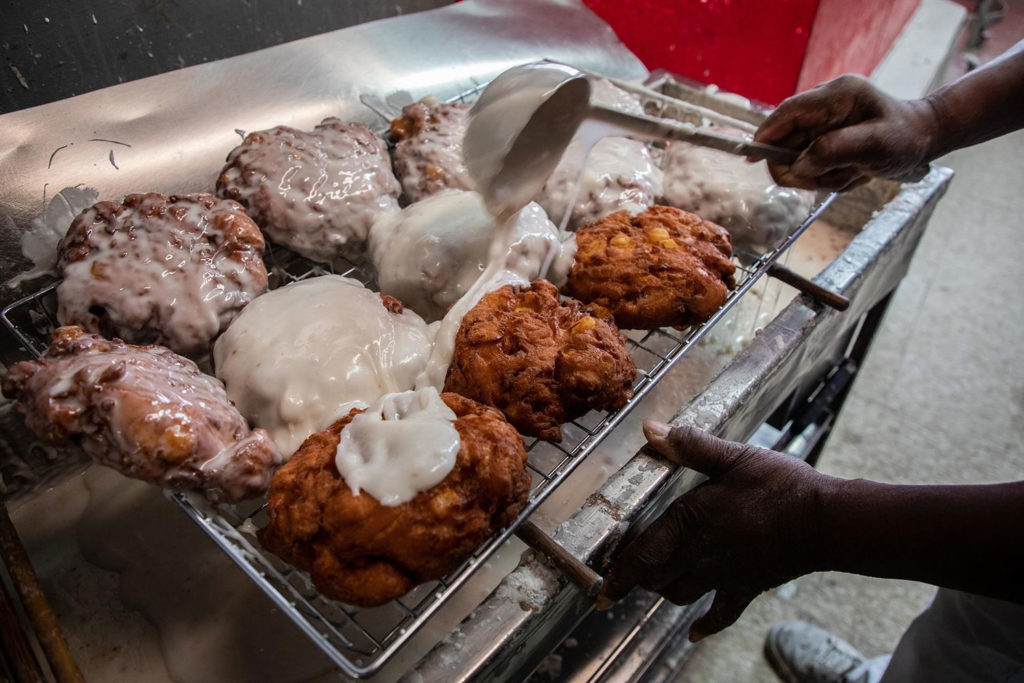
49. Roseland: Old Fashioned Donuts, 11248 S. Michigan Ave.
Old Fashioned has been in business 50 years and doesn’t look any different than the day it opened. Walk through the glass and wood door, with the metal tab labeled “PUSH,” and you’re in a diner with a few stools and an RC Cola menu board spelling out the bill of fare in plastic letters of varying sizes. 1 DONUT $1.14. MALTS $3.20. PIZZA PUFF $2.50. The air is scented with McIntoshes and oil, the smell of Old Fashioned frying its famous apple fritters, a family-sized treat at 850 calories. Buritt Bulloch, the 83-year-old founder, still gets to work at 6 a.m. every day to make the donuts. Even if you show up late on a Saturday, after all the fritters are sold, you’re still going to eat the best doughnut in Chicago. Try the glazed cake. Bite through the sweet crust, into the softest, flakiest ring of fried dough you’ve ever eaten.
50. Pullman: Arcade Row, 500 block of E. 112th St.
Pullman was one of America’s first planned industrial communities, constructed between 1880 and 1892 to house the laborers, craftsmen, and managers of Pullman’s Palace Car Company. Arcade Row is a block of houses with mansard roofs, wooden porches, fireplaces, wooden trim, and wainscoting, today occupied by the same class of people Pullman built it for: white-collar professionals. “There are people who were attracted to the neighborhood because of the historic character,” says longtime resident Mike Shymanski. “There are all sorts of people who live in these houses: educators, engineers, skilled workers.” To look inside one, take the Historic Pullman House Tour on October 8–9.
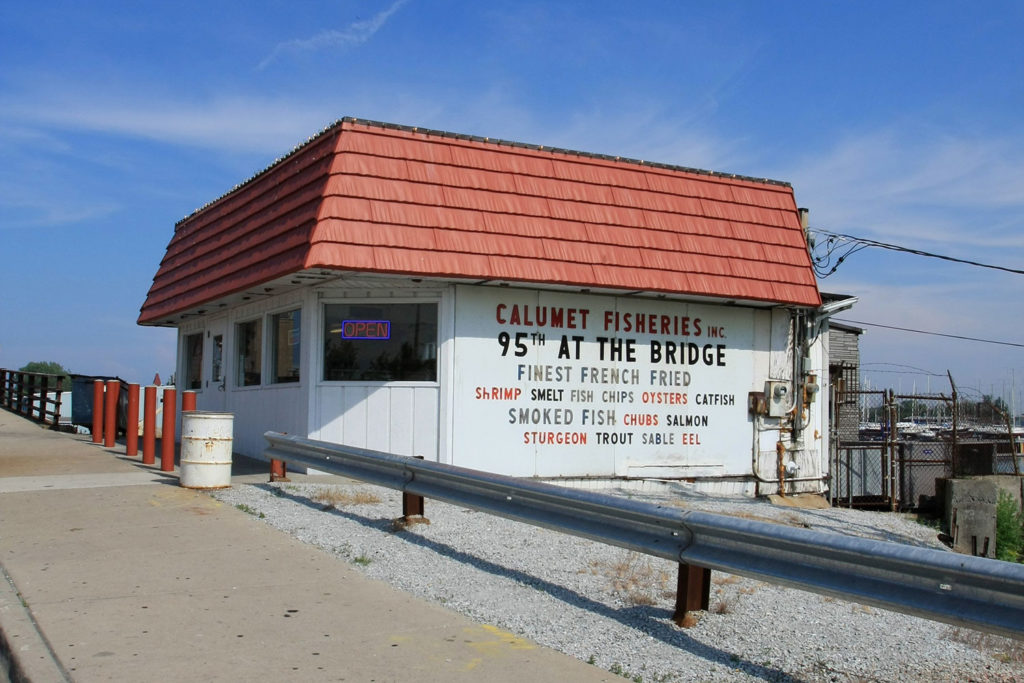
51. South Deering: Calumet Fisheries, 3259 E. 95th St.
Calumet Fisheries hasn’t always been at the foot of the 95th Street bridge. The little red-roofed shack that serves fried perch and catfish and home-smoked shrimp and salmon was built beside the 92nd Street bridge. In 1928 the building was loaded onto a scow and moved three blocks down the Calumet River so the bridge could be widened. Calumet Fisheries won a tiny measure of distinction by appearing on the cover of the April 1978 issue of National Geographic in an aerial photo of the southeast side. The magazine cover is displayed on the wall, the restaurant’s red roof circled. The joint had another brush with fame in 1980. The bridge-jumping scene from The Blues Brothers was filmed on 95th Street, right in front of the restaurant. The street was closed for four blocks so the Bluesmobile could pick up enough speed to make the leap up a ramp and over the partially opened drawbridge. Now it may be the most Instagrammed restaurant in Chicago. Urban adventurers love to prove they went all the way to 95th Street for seafood.
52. East Side: Calumet Park, 9801 S. Ave. G
After visiting Calumet Fisheries, take a catfish dinner to the beach in Cal Park, and wait for a lake freighter to approach the Illinois International Port, at the mouth of the Calumet River. A 700-foot-long ship looks ludicrously out of proportion on Lake Michigan — dark, angular, as Teutonically modernistic as a rusting sculpture on a public square. The Calumet Park Fieldhouse houses the Southeast Chicago Historical Museum, which contains an archive of the Daily Calumet newspaper and a diorama of Exchange Avenue in South Chicago during the neighborhood’s steel-making heyday.
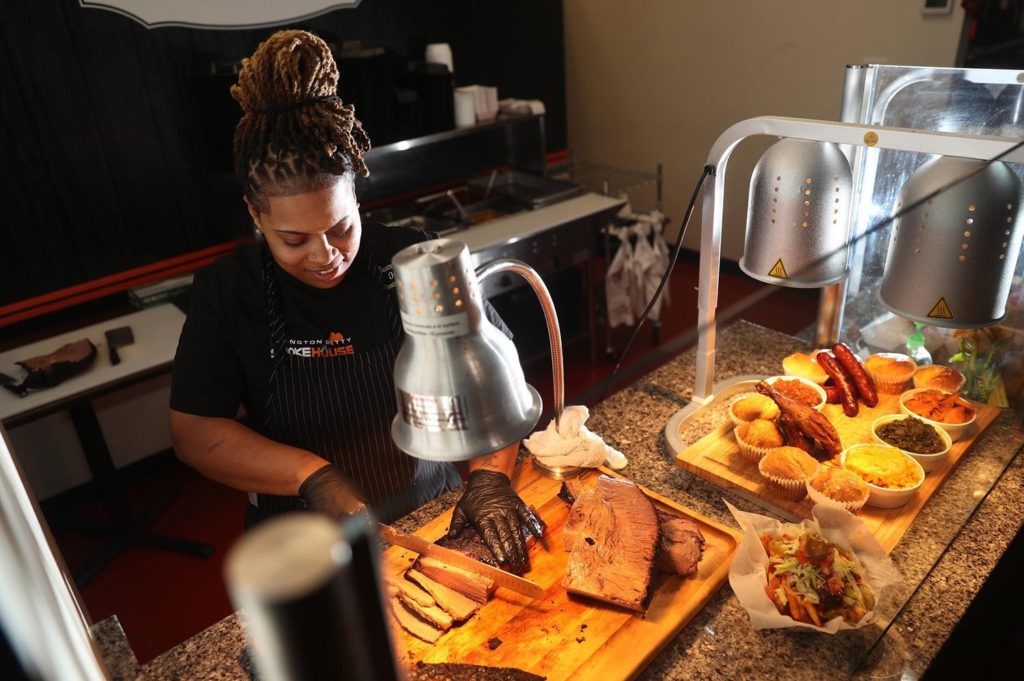
53. West Pullman: Lexington Betty Smokehouse, 756 E. 111th St.
West Pullman is so depopulated it lost the 34th Ward to the West Loop in the recent City Council remap. So I’m going to have to cheat a bit and recommend a restaurant in Pullman — although not the historic district. That would be too Pullman. Lexington Betty, which opened in 2016, took over Pullman’s One Eleven Food Hall, built to bring Black-owned restaurants to the Far South Side. Try the brisket, served on a brioche bun with fries. Add a side of mac and cheese.
54. Riverdale: 134th Pl.
Chicago’s most secret street is hidden in the woods behind the Altgeld Gardens housing project, along the north bank of the Little Calumet River. It’s pretty country down that way. There’s a house surrounded by old vehicles, including an RCN van and a cruiser bearing the peeled-off markings of the Truth or Consequences, New Mexico, Police Department. There is also a historical marker commemorating an outpost of the Underground Railroad at what is now Chicago’s Finest Marina. In the 1850s, the land belonged to a Dutch farming family who sheltered slaves making the “Riverdale Crossing” on their way to Canada.
55. Hegewisch: Aniol True Value Hardware, 13416 S. Baltimore Ave.
The most neighborhoody of neighborhood hardware stores has been in the Aniol family since 1955. Not just a place to buy a hammer or screws or WD-40, but a place to chat with Mike Aniol, a Hegewisch institution who can talk about the old days in the semi-rural neighborhood, when he woke up asking himself, “Where am I going fishing or hunting?” and grabbed his shotgun to bag deer, possums, or raccoons in the wild lands around Wolf Lake.
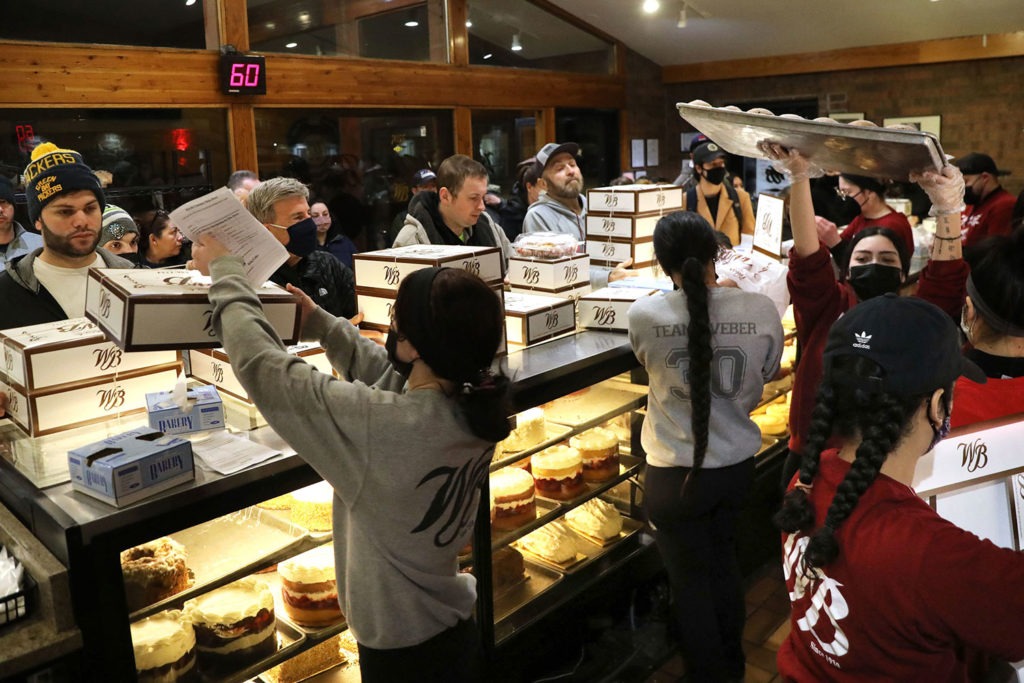
56. Garfield Ridge: Weber’s Bakery, 7055 W. Archer Ave.
Opened in 1930 by German immigrant Erich Weber, this bakery on the edge of the city is now owned by a third generation of the family. Cakes, cookies, and Danish are Weber’s everyday fare, but its busiest day of the year is Paczki Day. In honor of Garfield Ridge’s Polish heritage, Weber’s opens at 4 a.m. to sell the pre-Lenten pastries.
57. Archer Heights: Xocome Antojeria, 5200 S. Archer Ave.
Archer Heights was once Irish, Polish, and Lithuanian. In the last 40 years, though, its Latino population has increased from 3 percent to 80 percent, as families moved southwest from Pilsen and Little Village, seeking a safer and less expensive neighborhood. The Mexican restaurants have followed. Xocome Antojeria is one of the few taquerias in the city to serve tlacoyos — masa azul tortillas stuffed with refried beans and topped with lettuce, tomato, onion, farmers’ cheese, and sour cream.



